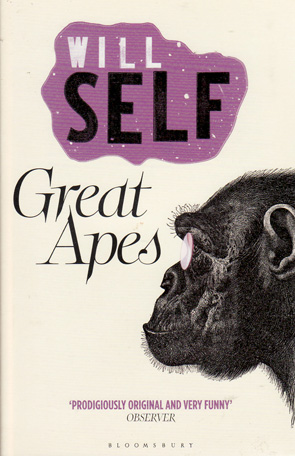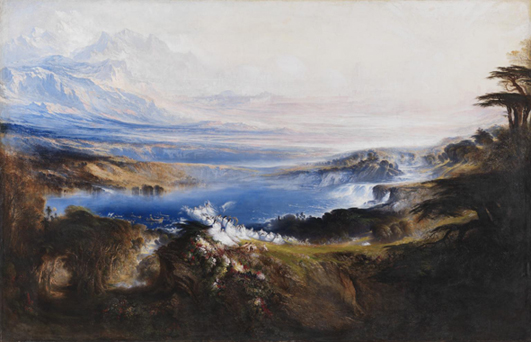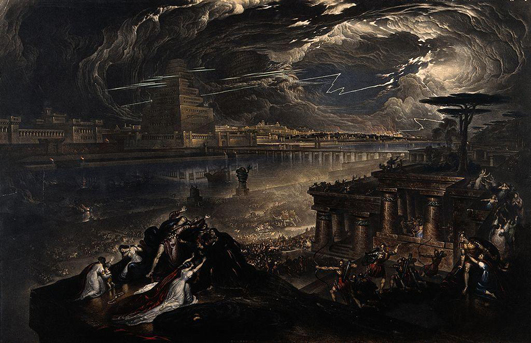
Great Apes features Will Self’s psychiatrist, Zack Busner, first introduced in The Quantity Theory of Insanity. This time he is older, near the end of his career … and a chimpanzee. For this is the premise of Self’s novel. Great Apes is set in an alternate reality which really is a ‘planet of the apes’. In this world, Simon Dykes, Self’s protagonist, wakes up after days of indulging in drugs and sex, to find everyone around him is a chimpanzee. He even looks like a chimpanzee, although he is convinced he is essentially human. Yet Self leaves little room for doubting the reality of this world over Simon’s human delusion, of a world where humanity rules. Self establishes this conceit through a preface by ‘W.W.S.’ (an obvious nom de plume for the human author, William Woodford Self) who celebrates ‘chimpunity’ and discusses issues relating to humans, including the need to continue experiments on humans to find a cure for CIV (Chimpanzee Immunodeficiency Virus), human mating behaviour, animal rights and the likelihood of humanity’s survival in the wild. In doing so, Self signals that the world we are about to enter is not a delusion, as far as Simon should be concerned –the book is written by a chimp , after all – making its satirical import is far-ranging.
Simon begins the novel as a human. At least, he thinks he does. There are a lot of hints that foreshadow for the reader that Simon’s impending change may be delusory. When Sarah, Simon’s girlfriend, is propositioned at a bar, she disparagingly thinks of her suitors as apes. Of course, the chimpanzees of this world refer to other primates as apes, just as we do, so her comparison is just as likely to support the reality of W.W.S’s reality in hindsight (In fact, later in the novel Simon is promised he can view a human at the zoo, only to be shown a gorilla. Chimpanzees see little difference in them.) When Sarah and Simon have sex, he begins to groom her, a social activity extremely important in the chimp world, and he whispers Monkey, Monkey
to her. When Simon sees children on a jungle gym, he silently thinks to himself that they look like chimpanzees. There are many allusions embedded in the story before Simon’s putative conversion. But when Zack Busner appears, he is a chimpanzee from the start. That’s the reality that the novel will not let you dismiss.
Apart from that, the story is relatively simple. It follows Simon’s mental breakdown. He insists he is human, and Zack Busner mentors and treats him, hoping to rehabilitate Simon and overcome his delusion. Set against this is Busner’s own story. He is a chimp in the twilight of his career beset by challenges from younger professional chimps like Gambol, who want to assume his social and professional position as alpha male. The threat of legal action over ‘Inclusion’, a drug Busner illegally tested on unsuspecting chimps like Simon, and which may have caused Simon’s delusion, also threatens his career. Simon’s case may be his last.
While Self’s novel is a brilliant satire of modern humanity, I suspect it would offend as many people as it might please. Darwin’s theory of evolution, which placed humans in the family of primates and offered an alternative understanding of the world to religious narratives, is still highly controversial. Self’s narrative doesn’t change much concerning evolution’s narrative, except that it places chimpanzees as the winners in the evolutionary race. Self weighs in on the matter of evolutionary fitness through the issue of human vocalisation and chimpanzees’ preference for signing. In this world, vocalisation is judged to have been a disadvantage to humans. Chimpanzees have developed a complex system of signing mixed with basic vocalisations – pan-hoots – derived, they believe, from the socialising aspects of peer grooming. Humans, on the other hand, have become bogged down in a perverse and clamorous sound garden; its capacity for effective gesticulation as stunted and atrophied as its stunted and atrophied fingers and toes.
As is often the case, Self taps the comic potential of this situation. Simon reasons to Busner that in this world it would have made more sense for television to be invented before radio; in fact, there would be little reason for radio to have developed at all. Busner agrees. Television did come first while radio was invented by Logie Baird (who invented television in our human world). Simon asks how he invented the radio. By accident,
Busner tells Simon, completely by accident. One day he went into his laboratory and his research assistant had left a television on inside a cupboard. All Baird did was shut the door.
While Self’s premise offers the opportunity for many comic moments like this, it also offers the opportunity to step outside a human perspective and view our world anew, as W.W.S’s preface anticipates. The treatment of animals in zoos, the efforts to protect animals in the wild and to understand them are all given new light through Simon’s changed perspective.
But I found the subject of human nature, albeit considered through the lens of chimpanzee society, most interesting. Self creates a dichotomy between the natural state and the civilised state which, problematically, is not clearly delineated from the perspective of human beings – those of us in our world reading the book – concerning chimpanzee customs. The problem is most clearly highlighted through chimpanzee mating and grooming customs, and their establishment of dominance and rank, against the art world in which Simon has lived. The chimpanzees of this world have an attitude towards sex that is widely at variance with most human attitudes. Public sex is routine – vast conga lines of buggery can form around females in oestrus – and perfunctory; anything over thirty seconds is excessive. In fact, male chimps brag how quick they are. Sex is mundane and expected. In another comedic scene David, one of Busner’s gamma males from his household, penetrates Charlotte from behind while balancing a newspaper on her back so he can continue to read. And attitudes to abuse are at variance with our own values, too. For instance, a young female chimp can claim to be the victim of ‘child abuse’ if her father fails to mate with her. There are endless grooming sessions, also: for consolation, for bonding and the establishing of dominance within the group, even in professional situations. There is an outrageous scene in which Busner enters the hospital and immediately goesracketing down the corridor
with windmilling arms and stomping feet
. As Busner makes his display he is fully horripilated and barking with exceptional violence. Busner’s penis was erect – a pink spike in his groin. Both he and Bowen were spraying urine and saliva.
Once Whatley, the resident doctor, has accepted Busner’s dominance things become a little more stable: Come on, let’s adjourn to your office for a groom and a fiddle. Your subordinates and my patrol can clean this lot up.
All this questions what it is to be civilised, for a start. From a human point of view notions of civilised behaviour are shown to have no universal basis. Urine, shit, copulation and display all have a public presence in the chimp society. The scatological aspects of the book are reminiscent of Jonathan Swift’s Gulliver’s Travels, particularly in the last part of the book during Gulliver’s visit to the land of the Houyhnhnms, a race of rational, civilised horses beset by the presence of the depraved Yahoos, a race of humans who shit on them from trees. In Great Apes, David Grebe, a semiotic philosopher tasked with looking after Simon, is considered an ideal choice since he is a coprophiliac. He loves shit and Simon is retaliating in a typically chimp fashion. Simon is even served shit at a university function, much to his disgust.
Yet when Simon requests that Busner and his associates wear pants or skirts, when he is first admitted to hospital on account of him being disturbed by the sight of their naked nether regions, the chimpanzees are disturbed in turn. Dr Jane Bowen reassures Sarah: Nothing really kinky, you understand. No tweed or wool.
What a bizarre world in which tweed and wool are considered kinky! The measurement of social norms is also turned on its head in the formalised greetings and praise each chimp affords another. Thank you for kissing my arse
one chimp tells Busner. A female anthropologist tells Busner, I have watched all day for the burst of light that would mean your radiant, refulgent scrag was drawing near.
Busner, in turn, makes his formalised greeting: I am honoured madam, to make your acquaintance. The entire scientific community is in awe of your ischial pleat [the folds of skin around her backside] – and I too reverence your dangly bits.
It seems screamingly bizarre. It is, from the perspective of humans. Consequently, Simon finds it hard to submit to these rituals or the kindly beating Busner administers to put him in his place.
Later, Simon deconstructs the pretentions of the art crowd at an exhibition, which add up to very much the same kind of thing. Busner cannot understand the fashions worn by the art connoisseurs, since chimps wear a minimal amount of clothing (usually no pants). Simon explains: you have to appreciate this scene … as an expression of the – how can I put it “huu”? – of the dominance order operating amongst the disparate elements of the art world. They are all so over-dressed, because that’s one of the few ways they can gain any attention, any preening, from their “euch-euch” hierarchical superiors – or subordinates, or peers –
.
In contrast to the chimp world, full of vivid connections to their own ‘chimpunity’, is Simon’s artistic expressions which seem to express the alienation of humanity from its own nature. Inspired by the apocalyptic paintings by John Martin, The Plains of Heaven and The Fall of Babylon, Simon seems to offer an apocalyptic interpretation of civilisation devoid of signifiance. In particular is Simon’s depiction of a fire at King’s Cross with a baby falling from an explosion towards the viewer, another depicting the inside of a plane at the moment of impact and a third showing shoppers at IKEA overcome by Ebola. For the chimps who view Simon’s art they see bodies removed from their natural environment and placed under stress of the modern world; of its mechanisms and infrastructure. And since all Simon’s sketches for the works are made of humans rather than chimps, the idea of bodies crimped, controlled and destroyed by civilisation, itself, seems to be at the heart of his work.
This was one of the most interesting aspects of the book for me. The comic potential of the story was well realised and its satiric overtones addressed issues that benefit from a new perspective. But the idea of taking the human world and imbuing it with a new set of values, of seeing our own lives afresh through Simon’s vision of an apocalyptic modernity that stunts our very natures, was powerful. One is left with a sense that, as humans, we have been separated from our own natures, perhaps to our detriment, by civilised modernity. This idea seems related to the question of sexuality. Simon criticises the chimp culture for its polygamous nature, for instance, but not far beneath the veneer of human monogamy is a world of secret exogamous matings
. Busner points out, The human impulse towards inconsistency seems as strong as the drive to consort … Mark me if I’m wrong, but it looks to me much the same as what chimpanzees get up to “huuu”?
Will Self’s book is a simple tale with much to think about. I liked it a lot, but depending upon your beliefs and views, this book may either offend or delight.
John Martin
John Martin's paintings are twice mentioned in Great Apes. His work forms a kind of psychological template for Simon's apocalyptic vision of the destructive forces of civilsation, and humanity's alienation from its own essential nature.

"...a conventional enough view of romantic upland - bluer and yellower peaks and valleys, receding to a hazy horizon - was reviewed when Simon saw that what he had assumed initially was a plume of smoke or spume, issuing from a rocky cleft in the foreground, was in fact a great tumult of angelic beings in close, but irregular, formation. There were so many of them that they altered the scale of the picture entirely. What Simon had thought a horizon of some thirty or forty miles seen from a peak perspective became an unreal hundred to two hundred miles of nonlocatable nirvana. An impossible realisation of another planet, leaning towards the spray-guns and computer manipulations of Now, rather than the layered, mannered evocations of Then."

"A massive vortex of stone, wood, water, fire and flesh, gurgling down an invisible pug hole of destruction. Grey-robed Babylonians were caught up in this, flung holus-bolus, arms and legs cartwheeling, their disordered whipped cream beards froth to the mealstrom ... Babylon contained this moment of explosion, this blastosphere, latent in all its solidity, its municipality.
And if not Babylon, why not London?"
Vocabulary
I read a disparaging review of Great Apes which criticised, among other things, the book's wordiness, claiming it used a twenty dollar word every page.
Will Self does sometimes use an elevated level of language, although it tends to also be a precise and apt use of words. Here are a few from the novel:
Quadrumanous: Having all four feet usable as hands
Brachiation: To move by swinging from the arms from one hold to another
Coprophiliac: Someone with an unusual interest in excrement, particularly as a sexual fetish
Horripilation: When hair stands up from the skin due to excitement or fear
Heautomorphism: Self may have made up this word, unless it's a psychiatric term I haven't found on the internet. It's use is similar to Heautoscopy
, a psychiatric term meaning the hallucination of seeing one's own body from a distance. Self's use of Heautomorphism
seems to describe a phenomenon when someone sees another person as being physically other than they are. For instance, seeing a human but perceiving a chimpanzee. However, it is established that Simon does not suffer this condition.


No one has commented yet. Be the first!